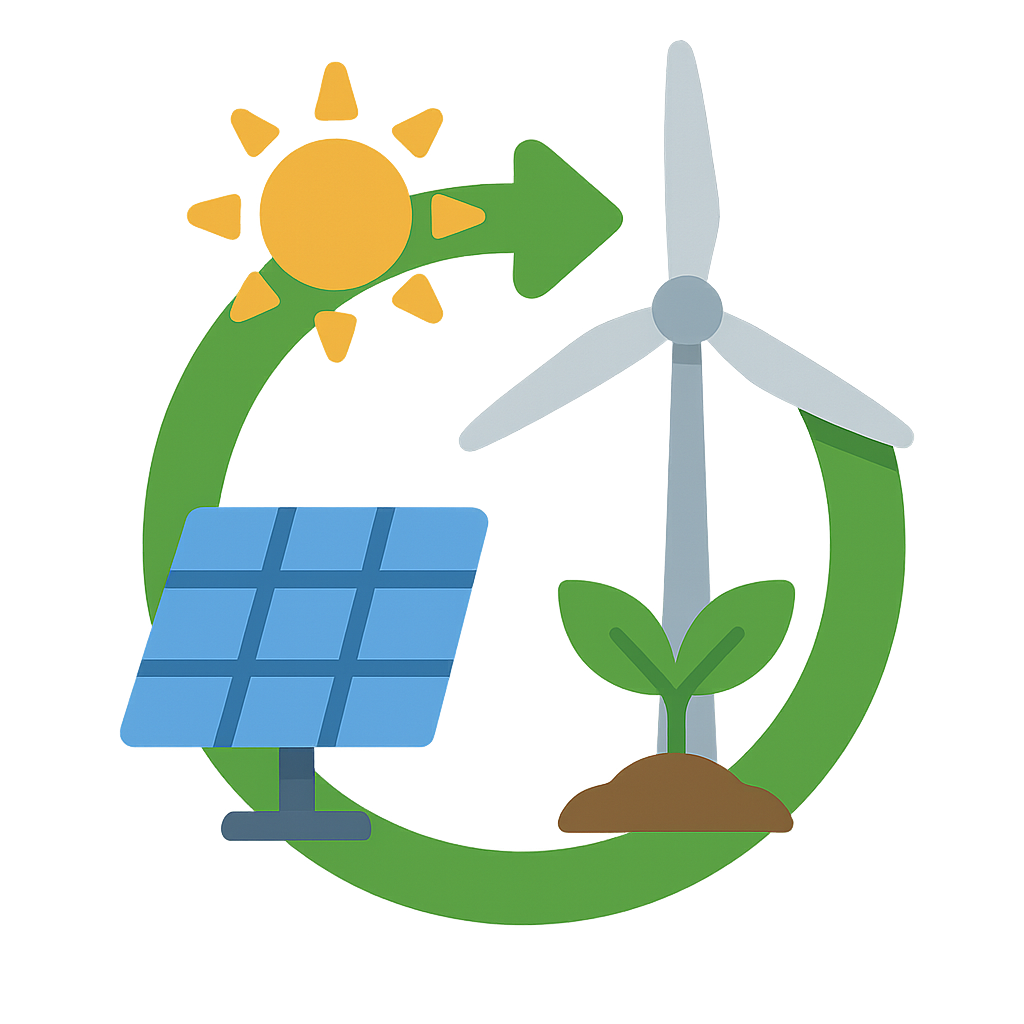The Unending Story of Renewable Energy
Have you ever felt me? I am the invisible push against your back on a blustery day, the force that sends kites dancing in the sky. I am the gentle, persistent warmth of the sun on your skin, the golden light that coaxes sleepy flowers to open each morning. I am the relentless rush of a river, carving its path through stone, and the deep, ancient heat that steams from cracks in the Earth’s crust. For eons, I have been a constant presence, a power that surges and flows all around you. I am a promise whispered by the turning of the world, a strength that is never used up, only borrowed for a time before returning. I am an endless cycle of giving, a source of power that cannot be emptied. You might not have known my name, but you have always known me. I am Renewable Energy.
Our friendship is older than the oldest stories. Long before the world was crisscrossed with wires and humming with machines, humans learned to work with me. I was their silent, dependable partner. Ancient sailors in Egypt and Phoenicia knew my windy breath well. They would unfurl their great cloth sails, and I would gladly fill them, pushing their ships across vast, shimmering seas to discover new lands and trade precious goods. On the banks of rivers, clever minds in Greece and Rome built magnificent water wheels. I would turn them tirelessly, my watery muscles grinding grain into flour to bake bread for entire cities. I was the sun, baking mud into strong bricks to build homes and drying fruits and fish to preserve food for long winters. Even my deep, earthly warmth was a comfort, as people in ancient Rome gathered in bathhouses heated by my geothermal springs. For thousands of years, our partnership was simple, direct, and harmonious.
Then came a time of great change, a time you call the Industrial Revolution. Humanity discovered a different kind of power, one that was hidden deep underground. They found coal, oil, and gas—the compressed energy of ancient forests and creatures. This new power was incredibly concentrated and potent. It roared in the bellies of locomotives and lit up cities with a brilliance never seen before. For a while, I was partially set aside. It was as if my steady, quiet hum was drowned out by the loud clamor of these new machines. But I was not gone. I was simply waiting, knowing that this new power, for all its strength, had a limit and a cost. Then, the spark of human curiosity turned back to me. A few brilliant minds began to wonder if my ancient power could be used in new, modern ways. In 1883, an American inventor named Charles Fritts took a sliver of a material called selenium, coated it with a transparent film of gold, and set it in the sun. To his astonishment, it produced a current of electricity. He had captured a sunbeam. It was the world's very first solar cell. Just a few years later, in 1887, a Scotsman named James Blyth looked at the powerful winds whipping around his cottage and had an idea. He built a tall turbine with cloth sails, and when I spun its blades, it generated enough electricity to power the lights inside his home, making it the first house in the world to be powered by wind. These inventors didn't just create machines; they rediscovered our friendship, imagining a future powered by my clean, unending strength.
Today, our friendship is more important than ever. The powerful fuels that once seemed so miraculous have left the world with a problem. They have filled the air with a hazy smoke and wrapped the planet in a warming blanket, giving it what feels like a fever. The Earth is asking for a change, for a cleaner breath of air and a cooler touch. And that is my promise. I am the solution waiting in the sky, the water, and the very ground beneath your feet. I am the clean power of the sun that asks for nothing in return. I am the mighty force of the wind that leaves the air fresher than before. My story is not over; in fact, the most exciting chapter is just beginning, and you are the one who will write it. The future of our friendship depends on your imagination, your creativity, and your courage to build a brighter, healthier world for everyone. Together, we can power a future that is as brilliant and unending as a sunrise.
Reading Comprehension Questions
Click to see answer
